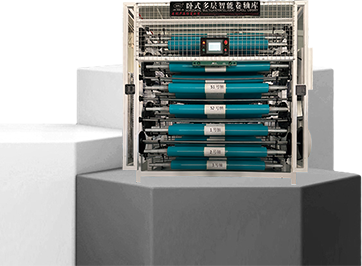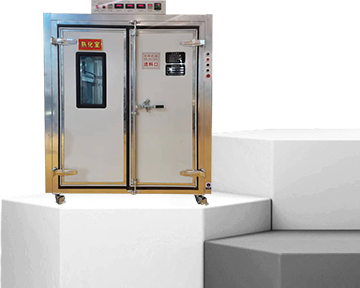Daily care and maintenance methods of stretch film baling machine
2024-03-25
The baling industry is in a state of flux, with countless machines being repaired. Pneumatic plastic steel balers have a high failure rate. A key trigger point for frequent repairs is the lack of daily maintenance and upkeep of the balers by users.
The plastic steel belt pneumatic baler has insufficient pulling force:
The pulling force of the plastic steel belt pneumatic baler is about 250-350 kg, which is enough to cope with normal tightening conditions. If the tightening force of the plastic steel belt pneumatic baler is too large or too small, you can use a small screwdriver to adjust the slotted throttle valve located on the right side of the baler. Regardless of the direction when adjusting, the louder the speed sound is, the greater the pulling force will be; vice versa, it will be small.
Regular lubrication and maintenance:
The motor of the plastic steel belt pneumatic baler is stuck and does not rotate:
When the pneumatic baler is used frequently, lubricating oil should be added to the air inlet interface of the pneumatic baler every 2-3 days for maintenance to lubricate the transmission device and pneumatic motor inside the baler. Regular oiling can not only maintain the baler. It lubricates internal parts and discharges dust or debris from inside the baler.
Wear of the tensioning wheel and anti-sliding block of the plastic steel belt pneumatic baler:
The tensioning wheel and anti-sliding block of the plastic steel belt pneumatic baler are inlaid with each other when there is no belt. When the baling belt is not put into the baler or during maintenance, it is forbidden to idle the baler to avoid artificial Damage to the tightening wheel and anti-slip disc. If you need to idle the baler to clean the debris from the tightening wheel, be sure to lift the tightening machine body first and then press the tightening button.
The plastic steel belt pneumatic baler slipped during the tightening process and could not be tightened. In serious cases, the belt broke near the welding joint:
After the plastic steel belt pneumatic baler is used for a period of time, the tightening wheels, anti-sliding blocks or vibrator teeth will be stuck with packing tape debris. These parts will be stuck with packing tape debris, which will cause the baler to appear during operation. Slippage, failure to tighten, forward movement of the baler, etc. Or due to serious wear of the tensioning wheel or anti-sliding block, tensioning slippage will occur. If the pneumatic plastic steel baler slips during the tightening process, it will directly affect the packing effect. The tightening may not be tight, or the tensioning wheel may rotate in place and scratch the strapping. In severe cases, the strapping may be tightened at the front end of the welding port. A broken belt was found at the bottom of the wheel.
I hope everyone can carefully record the above points and require the packaging workers to strictly abide by them. I believe that the failure rate of plastic steel belt pneumatic packaging machines will plummet, and most importantly, it will not affect the normal production operations of users.
Common faults and troubleshooting methods of pneumatic balers:
1. Tensioner failure
Phenomenon 1: The belt tensioner motor cannot start;
Troubleshooting methods: a. Send the baler to the manufacturer for repair; b. Add a few drops of lubricating oil to the motor from the air inlet; c. Readjust the air valve.
Phenomenon 2: The tight wheel slips on the upper strapping belt when running;
Troubleshooting methods: a. Add a gasket; b. Use a small screwdriver to adjust the tension of the strapping belt through the air valve; c. Use a dust blower or brush to clean the teeth of the tightening wheel; d. Replace the tightening wheel.
Phenomenon 3: When packing, the packing machine moves forward or cannot clamp the end of the packing belt.
Troubleshooting method: a. Clean the teeth of the pressure plate hanging teeth, and use a dust blower to blow out the residue; b. Replace the pressure plate hanging teeth; c. Use a small screwdriver to adjust the throttle valve.
2. Welding failure
Phenomenon 1: Incomplete or incomplete fusion
Troubleshooting methods: a. Refer to the instructions and adjust the fusion time; b. Try a higher air pressure; c. Replace the air pipe with a larger inner diameter; d. Clean the teeth or replace the vibrator and pressure plate gears; e. Lubricate the motor from the air inlet Oil
Phenomenon 2: The packing belt is excessively fused or broken during the fusion process
Troubleshooting method: a. Press and hold the reverse valve to release the tension of the packing belt; b. Hold the tensioner to connect the tensioner with the exhaust valve, and then open the stop valve.
Related News
Industrial integrated chiller product features
What should we pay attention to when using the chiller?
Structure and temperature principles of fully automatic plastic curing chamber
How to adjust the pallet stretch film baling machine?
What issues should be paid attention to in daily use of industrial integrated chillers?
How to add water to the battery on the battery forklift after being used for a long time
How to maintain forklift batteries
Industrial integrated chiller product features
What should we pay attention to when using the chiller?
Structure and temperature principles of fully automatic plastic curing chamber
How to adjust the pallet stretch film baling machine?
What issues should be paid attention to in daily use of industrial integrated chillers?
How to add water to the battery on the battery forklift after being used for a long time
How to maintain forklift batteries
Contact
You can contact us in the following four ways, and we will communicate with you immediately upon receiving your inquiry!
1. Call us.
2. Send an email.
3. Leave a message.
4. Add WeChat or WhatsApp.







